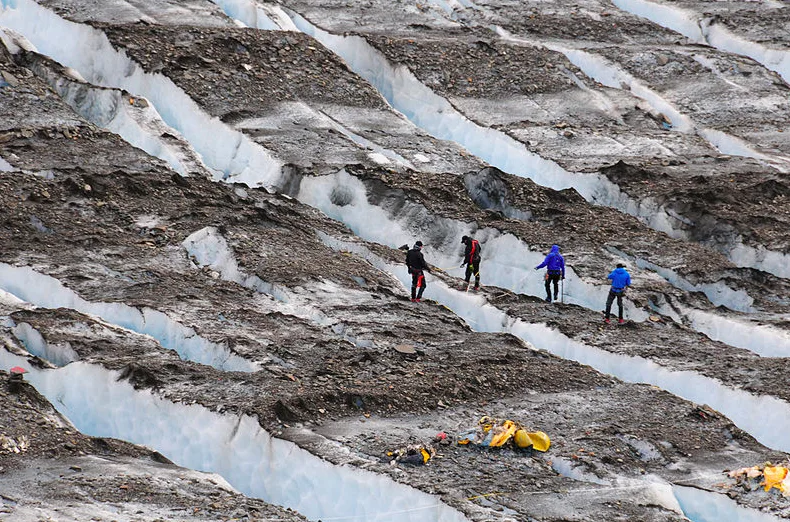
Human remains from 1952 U.S. military plane crash found in Alaska glacier
Military personnel are racing to recover debris from long lost wreckage as glaciers in Alaska rapidly melt.
The C-124 Globemaster, a U.S. military plane, crashed into Mount Gannett north of Anchorage on November 22, 1952 and claimed the lives of 52 military service members.
The frozen landscape and the harsh weather prevented crews from surveying the site and identifying remains, so the plane and its contents eventually tumbled down the mountain and became embedded in the Colony Glacier.
Decades passed without any signs of the wreckage until 2012 when a yellow life raft was spotted on the glacier during a military training session. Colony Glacier is slowly receding and pouring into Lake George, which means that the wreckage could sink to the bottom of the lake and become permanently inaccessible.
The prospect of losing the wreckage has initiated annual searches at the site of the plane crash each summer when the weather is favourable.
“The reality of the situation is all of the debris and the remains are constantly falling to crevasses,” said Army Staff Sgt. Isaac Redmond, the mountaineering expert for this year’s excavation, as reported by the Associated Press.

A recovery team searching for aircraft wreckage, remains, or other personal affects at the site of the crash in 2012. Credit: Cpt. Jamie D. Dobson, U.S. Army/ Wikimedia Commons
A three-week recovery effort took place this year and remains were found approximately 200 metres from the toe of the glacier, where the ice calves and falls into the lake.
Human remains have identified all but nine that were onboard the flight and objects that were discovered this June include a Buddha figurine, a flight suit, several 3-cent stamps and a crumpled 1952 Mass schedule for St. Patrick’s Church in Washington, D.C., as reported by Anchorage Daily News.
NEARBY GLACIERS ALSO RAPIDLY DISAPPEARING
Colony Glacier is located near several glaciers that are also disappearing as global temperatures warm. Barry Glacier, located roughly 100 km each of Anchorage, is slowly retreating and is showing signs it could cause a catastrophic disaster within the next two decades.
An international group of scientists from Canada, Germany and the U.S. says Barry Glacier’s unstable mountain slope could collapse and send millions of tons of ice crashing into the Harriman Fiord, which could trigger a massive tsunami over 30 metres tall.
The tsunami would be 10 metres upon reaching Prince William Sound, an area that is home to nearly 300,000 people and is frequently visited by fishing vessels, hunters and tourists.
Based on the scientists’ calculations, they say that it is possible that a landslide-generated tsunami could occur within the next year and likely that it will occur within 20 years. Severe landslide-generated tsunamis have happened in the Arctic before, which could indicate a concerning trend that is becoming more apparent as global temperatures climb.












